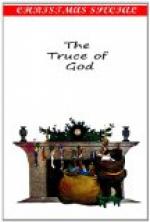American Catholics must not forget the excellent work done by George Henry Miles for the cause of Catholic literature, the more so as his name is not infrequently omitted from many popular histories of American literature. Yet the author of “The Truce of God” had mastered the story teller’s and the dramatist’s art. “If there was ever a born litterateur,” writes Eugene L. Didier, in The Catholic World for May, 1881, “that man was George Henry Miles. His taste was pure, exquisite and refined, his imagination was rich, vivid, and almost oriental in its warmth.” Moreover, he consecrated his life and his talents to the cause of Catholic education, identifying himself for many years with Mount St. Mary’s College, Emmitsburg, Maryland, with whose annals so much of the early history of the Catholic Church in the United States, is closely linked.
The author of “The Truce of God” was born in Baltimore, July 31, 1824; he died at Emmitsburg, July 23, 1872. In his twelfth year the lad entered Mount St. Mary’s College. Here he became a Catholic and had afterwards the happiness of seeing his family follow him into the Church. The studies at the “Mountain” in those days were still under the magic and salutary spell of the venerable founder, Bishop Dubois, and his followers. They were old fashioned, but they were solid, with the classics of Greece and Rome, mathematics, philosophy and religion as their foundation. They were eminently calculated to mold thinkers, scholars and cultured Catholic gentlemen. They left a deep impression on the young Marylander. After his graduation at the end of the scholastic year, 1843, the law for a short while lured him away, to its digests, its quiddits and quillets, abstracts and briefs. But it was putting Pegasus in pound. Miles at a lawyer’s task was as much out of place as Edgar Allan Poe was when mounting guard as a cadet at West Point, or Charles Lamb with a quill behind his ear balancing his ledger in India House. The Mountain and the Muses lured him back to Emmitsburg, where a short distance from the college gate, in the quiet retreat of Thornbrook, he settled to his books and a professor’s tasks




